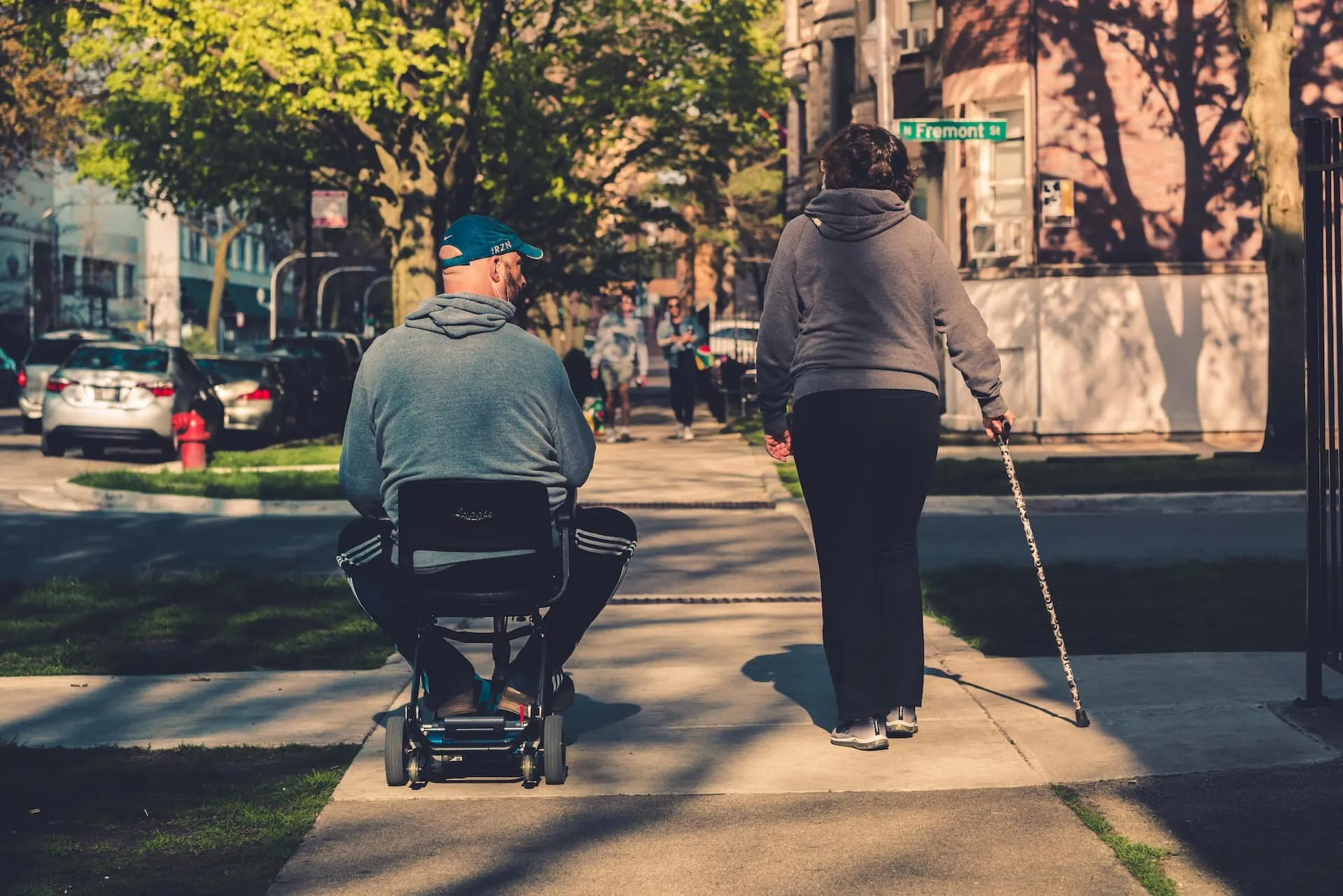
5 Mobility Aids To Help Live Your Best Life
As we age, many of us live with arthritis and other chronic illnesses. That doesn't mean we have to stay home and isolate. It's true that some people are stubborn about self-care or mobility aids and worry about how they'll be perceived. But if you live with pain, illness, or injury, they can help you live your best life.
Disability is not a bad word or a weakness! Often ailments that affect walking result from old injuries, while other times, the reason is illness, or it can be unknown. These are no reasons to stop enjoying moving around - you may just need a little help.
Many people live with disease and disability, especially as they age. Mobility tools help people live better lives and stay active with disabilities.
Where Do You Find Mobility Aids?
There are many basic mobility tools available online or in medical shops. If you want insurance such as Medicaid or Medicare to cover it, you may need to speak with them and get a prescription from your healthcare provider. If you are using a healthcare savings account, however, it may be automatically covered.
Once you’ve established if insurance covers it, you must go to a medical supply store or navigate to one that accepts insurance online.
Different Types of Mobility Aids
A healthcare provider can help people with disabilities decide the best mobility aid.
Mobility aids for walking are designed to provide support, stability, and assistance, helping people with mobility challenges to navigate their surroundings safely.
Here are some of the most common and basic mobility tools for individuals who have difficulty walking:
- Canes: One of the simplest and most widely used mobility aids. They provide balance and support by transferring weight from the legs to the upper body. Quad canes with a four-pronged base for additional stability are often recommended for older people with walking issues. Many canes are functional yet novelty - you can get them with skulls, cats or other decorations. Canes can be easily customized with stickers to make them more fun.
- Walkers: Walkers offer more stability and support than canes. They consist of a metal frame with handles and four legs. They provide a broader support base and are especially useful for individuals requiring more walking assistance. Walkers can be decorated with stickers.
- Wheelchairs: Wheelchairs help people with limited or no ability to walk to move around comfortably. They come in manual and electric variants. Manual wheelchairs require upper body strength, while electric wheelchairs are motorized and can be controlled using a joystick and methods. Stickers and custom decorative parts are made just for certain models.
- Mobility Scooters: Mobility scooters are similar to wheelchairs but are designed more for outdoor use. They are electrically powered and provide a comfortable seat for the user. They work great for people who have difficulty walking longer distances. They usually come with a basket and sometimes in different colors.
- Rollators: Rollators are walkers with built-in wheels, usually on all four legs, allowing smoother movement. They also have a seat and often include a storage compartment for personal items. Rollators provide stability, support, and a place to rest when needed. They are ideal for going places where there may not be seating.
Choosing and Using Mobility Aids
Mobility aids only work when people use them correctly. And they have to be willing to use them regularly. Everyone has their own needs, abilities, and recommendations from healthcare professionals.
Some people may feel embarrassed about using mobility aids. However, there is no shame in disability; mobility tools can help people live their lives fully.
People may need more assistance during a disease flare or during winter months. This means they may use more than one mobility tool.
People who use wheelchairs may use a walker at home but use the chair when traveling or on errands. People who use wheelchairs aren’t always paralyzed. However, they usually can’t walk long distances. A physical therapist or orthopedic doctor can help make decisions regarding wheelchairs and mobility aids.
Feeling “At Home” With Mobility Aids
Many older people resist using a cane or a wheelchair because of how they perceive disability. They may worry they are less valued as a person with a disability or that their disability will repel people. Your loved one is, after all, still themselves. They’re just themselves now, using a cane or other mobility aids. Reassure them that this is how you see them. Fighting the stigma associated with disability is hard, but you can make a difference in how your loved one perceives themselves.
If you have a loved one having trouble adjusting to a mobility device, ask them what would make it more tolerable. Gift them with a sticker for their chair or a custom cane for their birthday.
Many people like to customize their mobility aids with stickers or patches. Some men prefer a custom cane with camo or other designs. The best mobility aid is the one they are willing to use regularly. (The worst one is the one they shove in the closet or behind the door.)
Consider Present Moments Senior Living
Present Moments provides a safe, compassionate senior living community in a gorgeous environment with many amenities. Activities make your loved one feel more at home, and our environment is built with safety in mind. We can handle healthy meals, medication management, and outings. Learn more about our program and amenities at (442) 232-2824.

